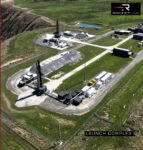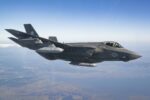In response to the growing threat posed by Ukrainian unmanned surface vessels (USVs), the Russian Navy has begun deploying tethered unmanned aerial vehicles (UAVs) aboard ships in the Black Sea. These systems are designed to provide persistent surveillance and early warning against low-observable maritime threats. The move reflects a broader shift in naval force protection doctrine as drone warfare reshapes littoral and port security dynamics.
Russia’s Naval Drone Defense Challenge
Since mid-2022, Ukraine has increasingly relied on explosive-laden USVs—often referred to as kamikaze or suicide drones—to target Russian naval assets in Sevastopol and beyond. These low-profile craft are difficult to detect with conventional shipboard sensors due to their small radar cross-section and sea-skimming profiles. Notable attacks include the October 2022 multi-drone strike on the frigate Admiral Makarov and repeated attempts against logistics ships and port infrastructure.
Ukrainian USVs have evolved rapidly in capability and autonomy. The latest iterations—such as the Magura V5—feature GPS navigation, EO/IR sensors for terminal guidance, and speeds exceeding 80 km/h. Some variants are believed to have limited autonomous waypoint-following capability or remote control via Starlink terminals.
This asymmetric threat has forced Russia’s Black Sea Fleet into a largely defensive posture within port confines or behind protective booms. Traditional close-in weapon systems (CIWS) like AK-630M or Pantsir-ME offer limited engagement windows against fast-moving surface drones at short range. As a result, early detection has become critical.
Tethered UAVs: A Persistent ISR Solution
To address this gap, Russian naval units have begun deploying tethered UAVs—also known as aerostat-style drones—from warships anchored near Sevastopol and Novorossiysk. These drones are connected via power/data tethers that allow continuous operation without battery limitations while transmitting real-time video feeds back to command posts.
According to open-source imagery analyzed by OSINT researchers such as @MT_Anderson and @detresfa_, several Russian patrol boats and auxiliary vessels now carry mast-mounted tethered quadcopters operating at altitudes of 50–100 meters. Most appear commercial-grade but ruggedized for maritime use.
The primary role of these UAVs is persistent electro-optical surveillance of surrounding waters for suspicious surface activity—especially at night or during low-visibility conditions when radar returns may be ambiguous. Their elevated vantage point allows earlier visual detection of incoming threats compared to deck-level optics.
System Characteristics and Limitations
The drones observed appear similar in form factor to Chinese-made DJI Matrice-series quadcopters or Russian equivalents like ZALA Aero’s tether-capable models. While not armed or hardened against EW attack themselves, their tethered nature ensures uninterrupted data flow—a key advantage over battery-powered free-flying UAVs that require rotation every 30–60 minutes.
Advantages of tethered UAV deployment include:
- Persistent overwatch: Continuous operation without battery swaps enables 24/7 surveillance cycles.
- Reduced RF signature: Wired data links minimize emissions that could be geolocated or jammed.
- Simplicity: Launch/recovery is straightforward from confined ship decks; no landing gear needed.
However, limitations remain:
- Altitude constraint: Tether length typically limits altitude to under 150 meters—adequate for harbor defense but insufficient for wide-area search.
- Sensitivity to weather: High winds can destabilize flight; salt spray may degrade optics over time.
- No kinetic effectors: Detection must still be followed by manual engagement using CIWS or small arms fire.
Tactical Integration with Shipboard Defenses
The deployment of tethered UAVs marks an effort by Russian forces to integrate layered sensing into their ship defense architecture—a concept akin to NATO’s “sensor-shooter” pairing but adapted under resource constraints. Once a suspicious contact is detected visually by drone feed, operators can cue onboard weapons systems manually or alert nearby units via encrypted comms channels like R-168 Akveduk VHF/UHF radios.
This approach aligns with broader trends seen globally in counter-drone operations where early visual confirmation enables faster reaction time from kinetic interceptors such as autocannons or directed-energy weapons (where available). In Russia’s case, it compensates partially for shortcomings in automated target recognition software on older naval platforms not originally designed for drone-era threats.
The use of commercial-grade ISR tools also reflects Russia’s increasing reliance on dual-use technologies amid sanctions-induced supply chain disruptions affecting military-grade optronics imports since 2022–23.
A Broader Trend Toward Low-Cost Maritime ISR
The adoption of tethered drones by the Russian Navy mirrors similar developments across global navies facing asymmetric maritime threats—from Iran’s use of quadcopters on IRGC fast attack craft in the Persian Gulf to U.S. Coast Guard tests of Skydio X2D units aboard cutters for port security missions.
This trend underscores a growing recognition that traditional radar-centric situational awareness is insufficient alone against small surface targets operating below radar horizon or amid clutter near shorelines. Visual ISR from elevated platforms—even if modest—is proving tactically decisive when integrated into rapid response protocols.
If successful in deterring further Ukrainian USV attacks—or at least enabling more timely countermeasures—the use of tethered UAVs could become standard practice across all major Russian naval bases exposed to drone incursions. Whether this adaptation proves scalable beyond static harbor defense remains uncertain given platform limitations at sea state ≥3–4 conditions typical outside sheltered waters like Sevastopol Bay.
Conclusion: Tactical Adaptation Under Pressure
The Russian Navy’s deployment of tethered surveillance drones represents a pragmatic response under operational duress rather than a revolutionary capability leap. It illustrates how modern navies are being forced into rapid doctrinal improvisation when confronted with novel threats such as kamikaze USVs—a domain previously neglected outside niche special operations planning circles pre-2020s.
This development also highlights how even basic commercial technologies can shift tactical balances when deployed creatively under real-world constraints—an insight likely not lost on other militaries observing Ukraine’s maritime drone campaign closely from afar.










